Beyond the Big Five: 10 Birds You’ll See on Safari
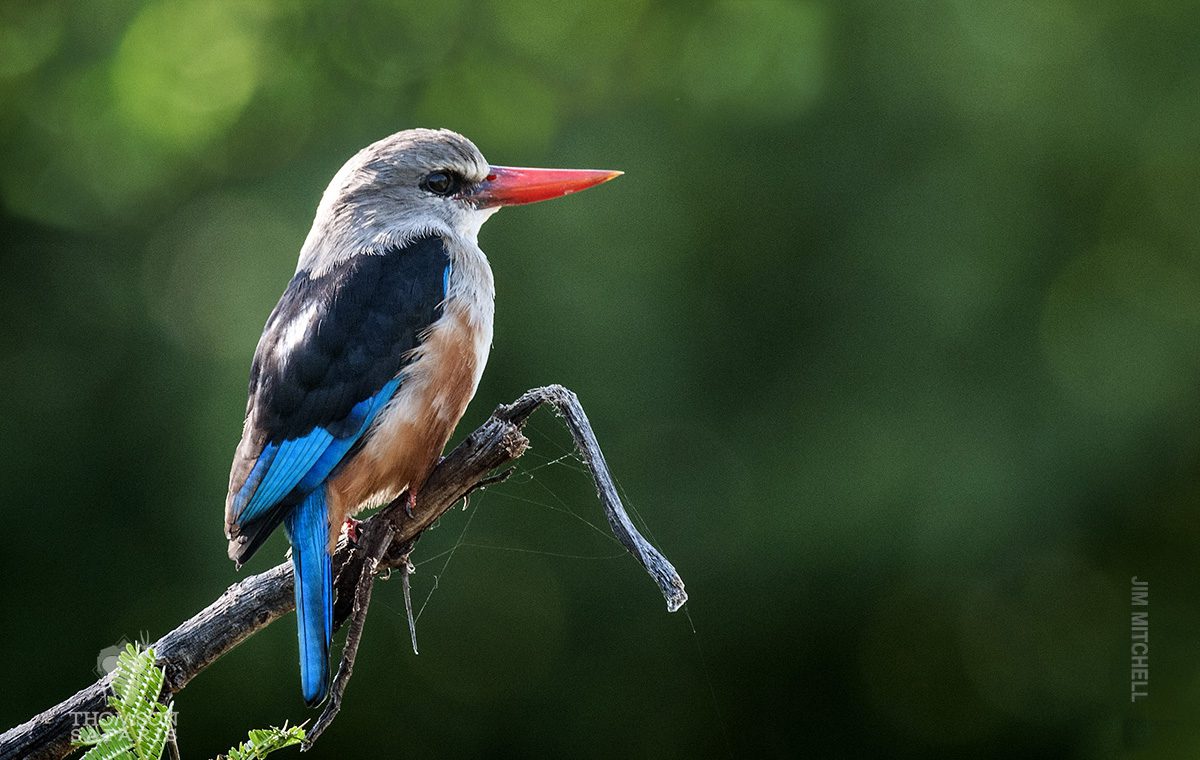
Birds may not belong to Tanzania’s Big Five, but they are still an amazing part of the Serengeti ecosystem. Tanzania is home to over 1,100 bird species, with as many as 500 of them being visible in the Serengeti.
Here are 10 of Tanzania’s most spottable birds. You’re likely to come across many of them on your safari. No binoculars needed!
Big Birds
Ostrich
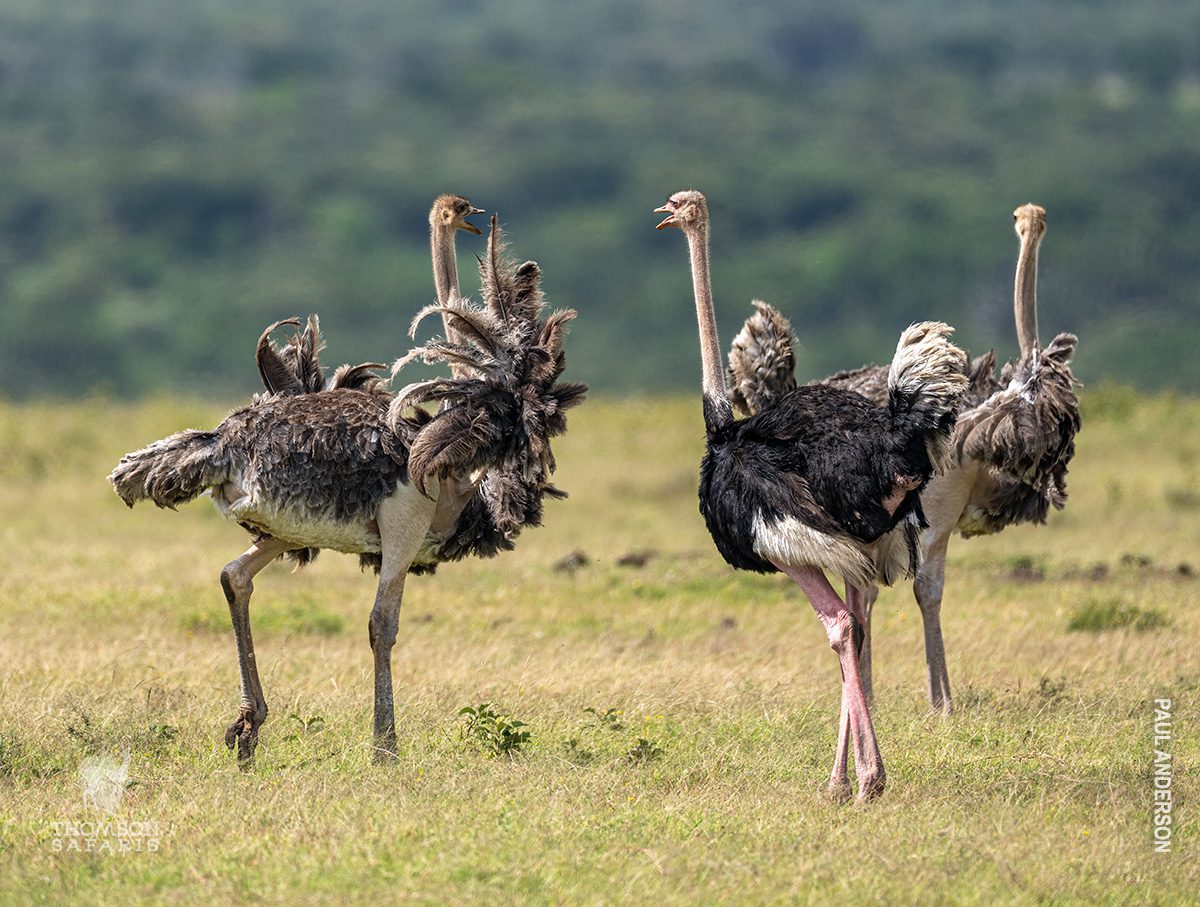
Instantly recognizable and enormous, the ostrich is prevalent throughout Tanzania. These flightless birds run at speeds over 43 miles per hour, making them the fastest land birds in the world. Female ostriches have grey-brown plumage, which provides good camouflage during the day, while male ostriches have black feathers, making them stealthy at night.
Ostriches make a range of sounds including snorts, whistles and loud booming noises when predators are near. It’s not uncommon to hear them before you see them!
Tawny Eagle
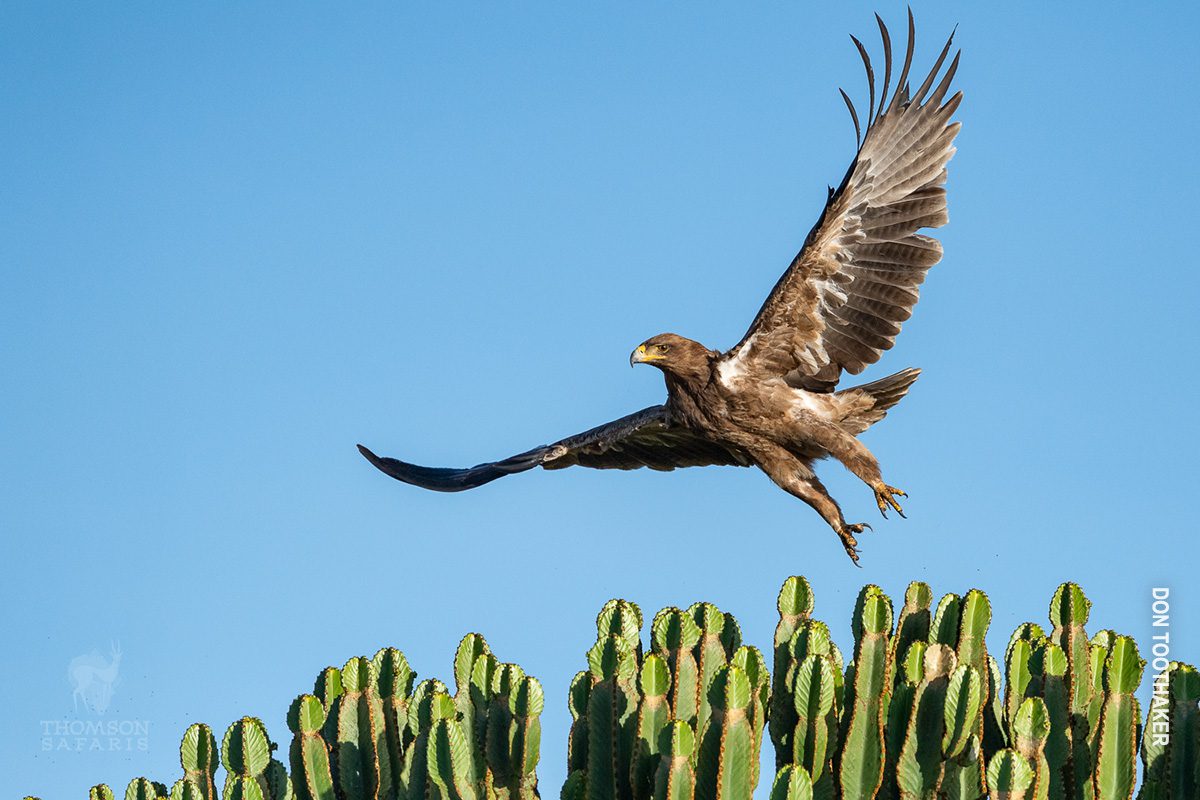
Short-legged and heavily feathered in white, reddish-brown or grey-brown, the Tawny Eagle live nearly everywhere in Tanzania. They are formidable hunters, diving from their perches and seizing prey in their sharp talons. They’re not picky eaters, either, and are known to snack on insects when given the chance.
Marabou Stork
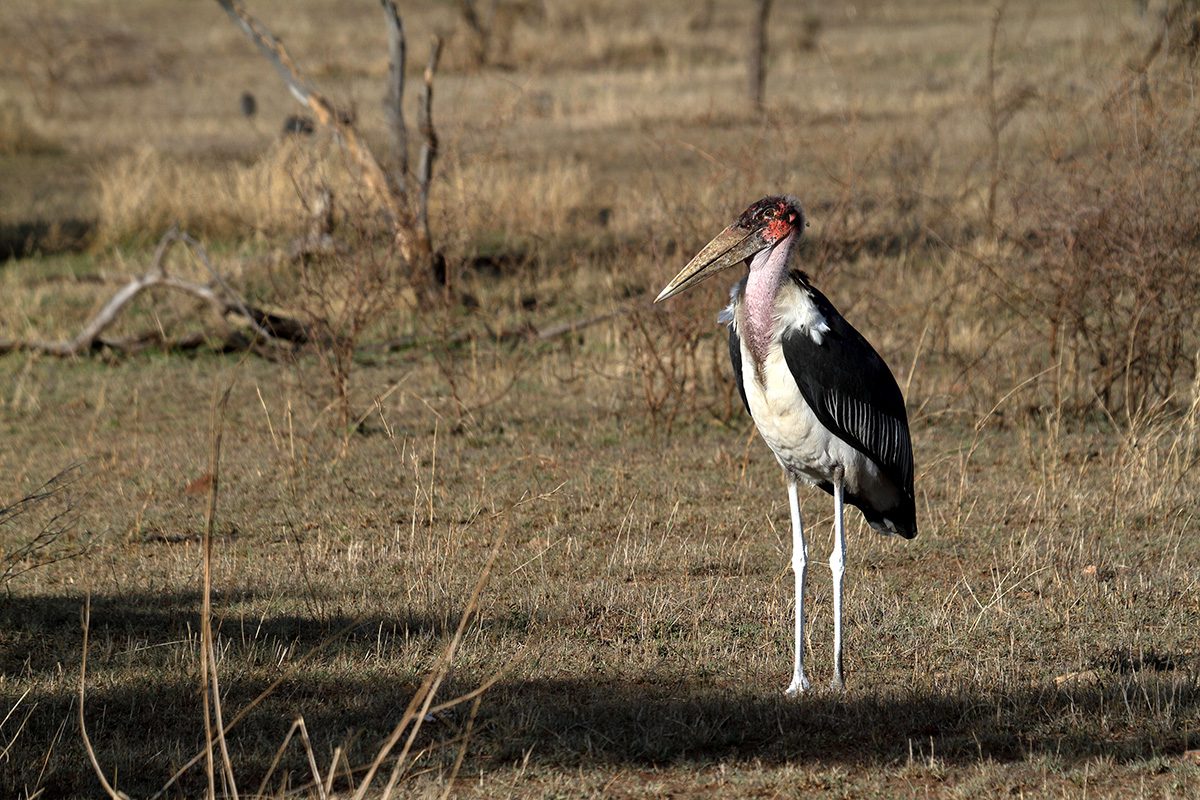
Found throughout the Serengeti, the Marabou stork has a massive dagger-like bill and pink head that appears as if sunburned. They also have huge wingspans that enable them to soar high above the ground. They are most often seen around carrion, stealing scraps from the kills of major predators. The lack of feathers around its head and neck enable it to stay clean while eating messy foods.
Marabou storks are intimidating, opportunistic creatures. When its throat sac is inflated, other marabous take this as a sign of dominance and get out of the way. If they are around a grass fire, it’s common for a stork to march ahead of the flames, attempting to grab any prey trying to flee.
Medium-Sized Birds
Grey Crowned Crane
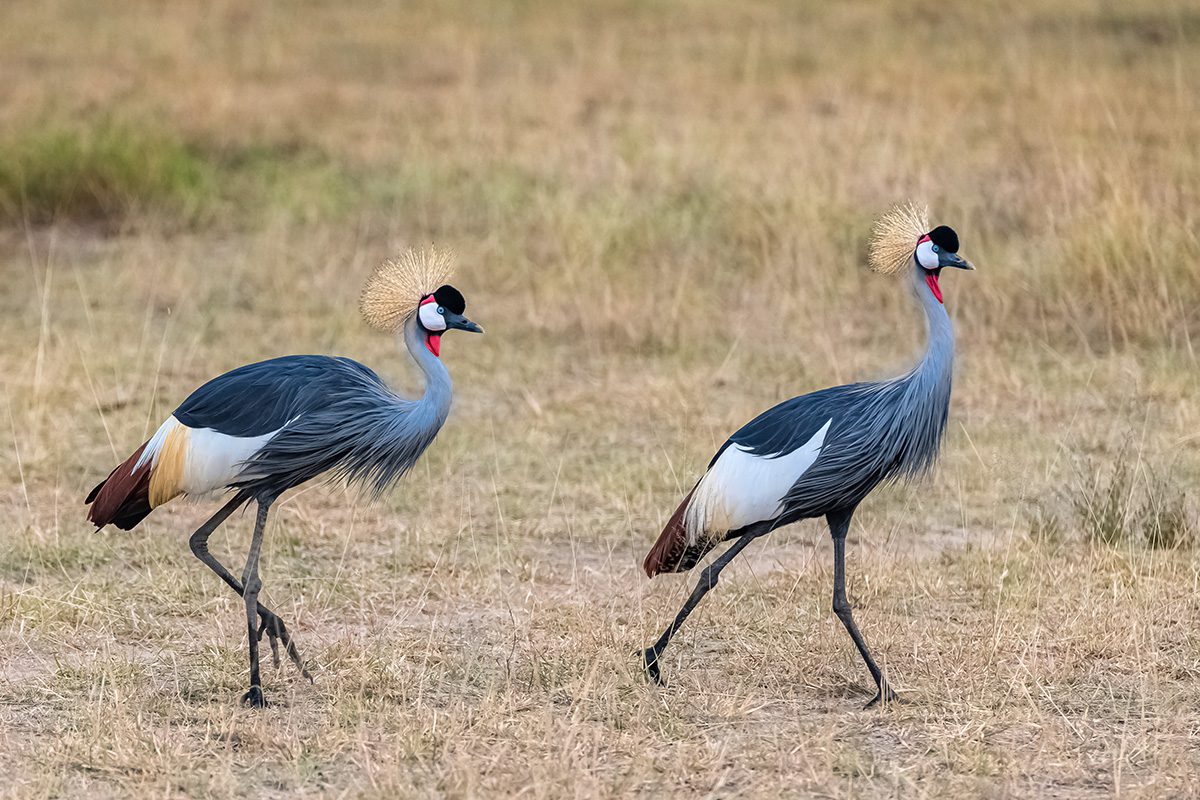
The striking grey crowned crane lives in the middle of the Serengeti, favoring flooded grasslands and open habitats when foraging. The males are commonly known for their performative dance, where they flap their colorful wings and skip around for potential mates. Despite the name, their “crown” is always golden-yellow!
Kori Bustard
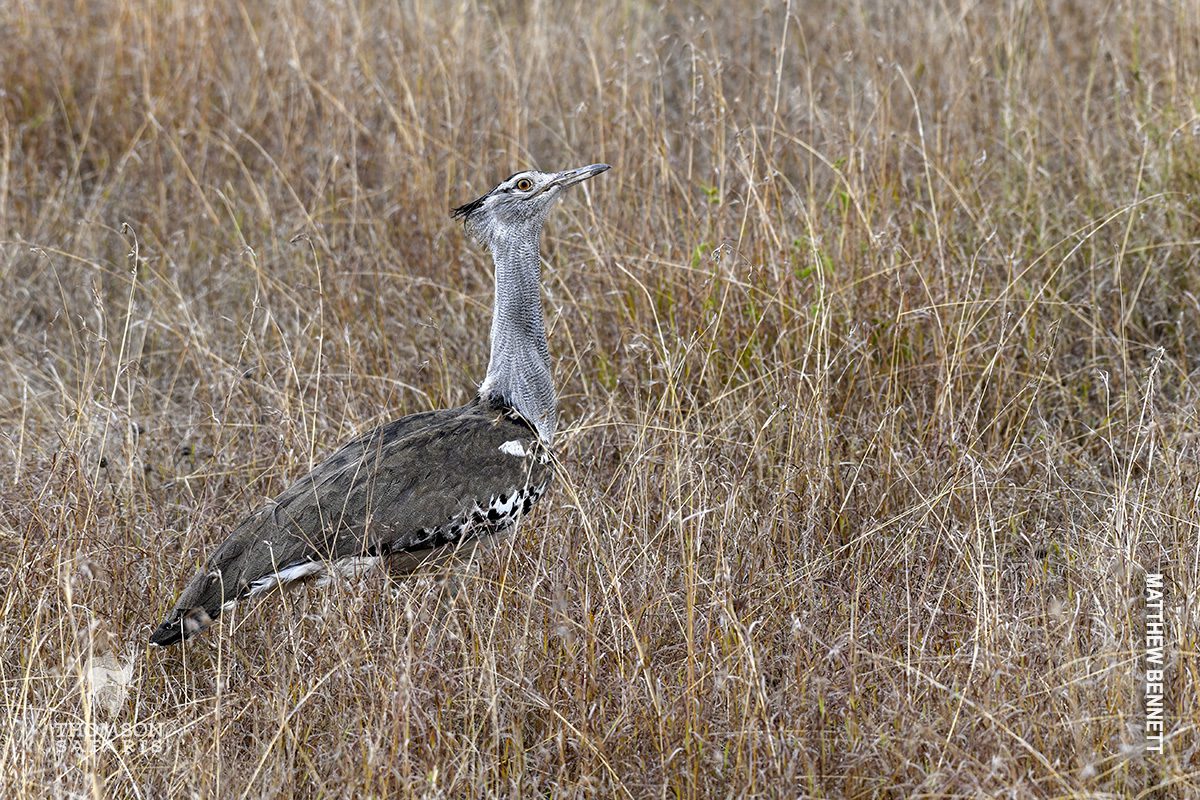
Buff and gray with only three front toes, the kori bustard prefers wide open grasslands and lightly wooded savanna. These birds are notably carnivorous, their diet consisting of small mammals, lizards, snakes, seeds, berries and insects.
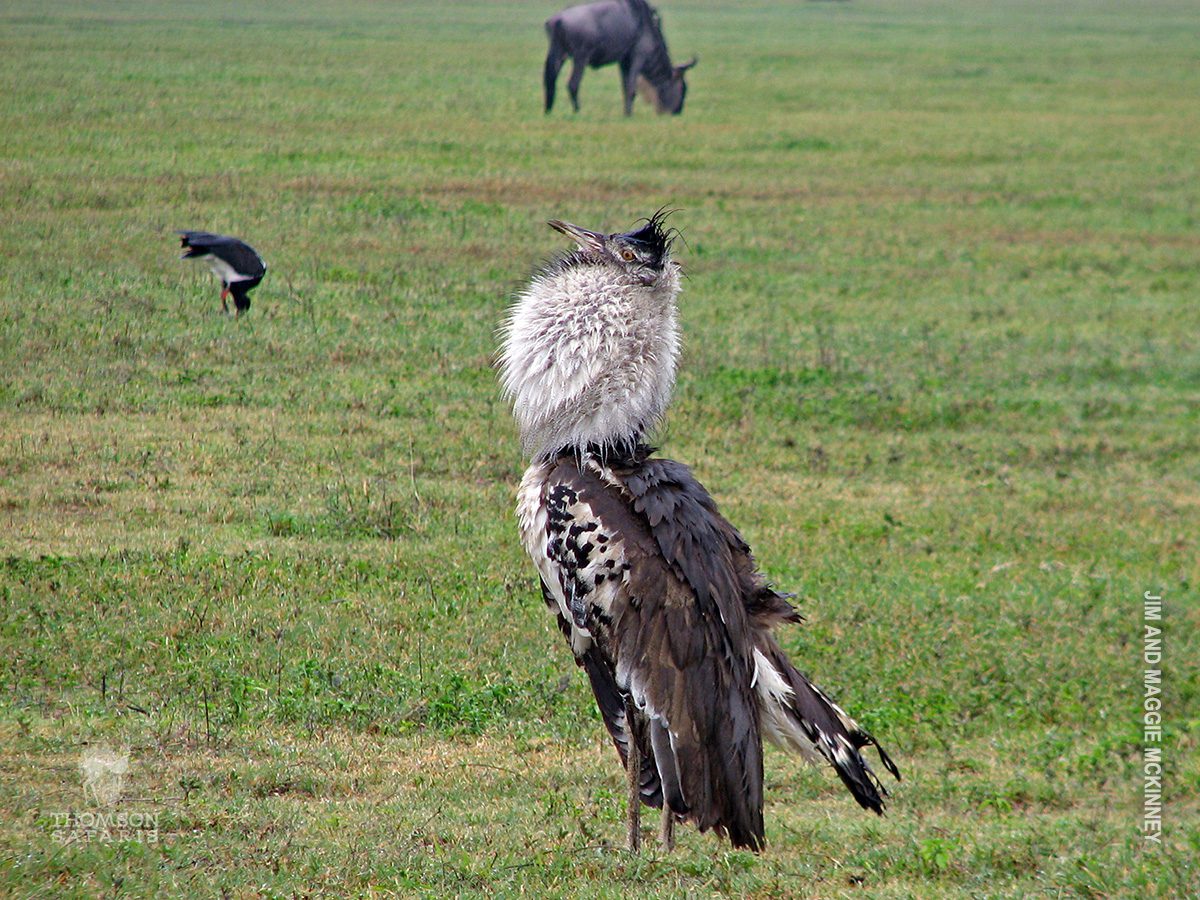
During mating, the male inflates his esophagus up to four times its normal size and moves its tail feathers to reveal as much of its white underfeathers as possible. Just as striking as its appearance is its low-pitched booming sound, often made during courtship with a female.
Lesser Flamingo
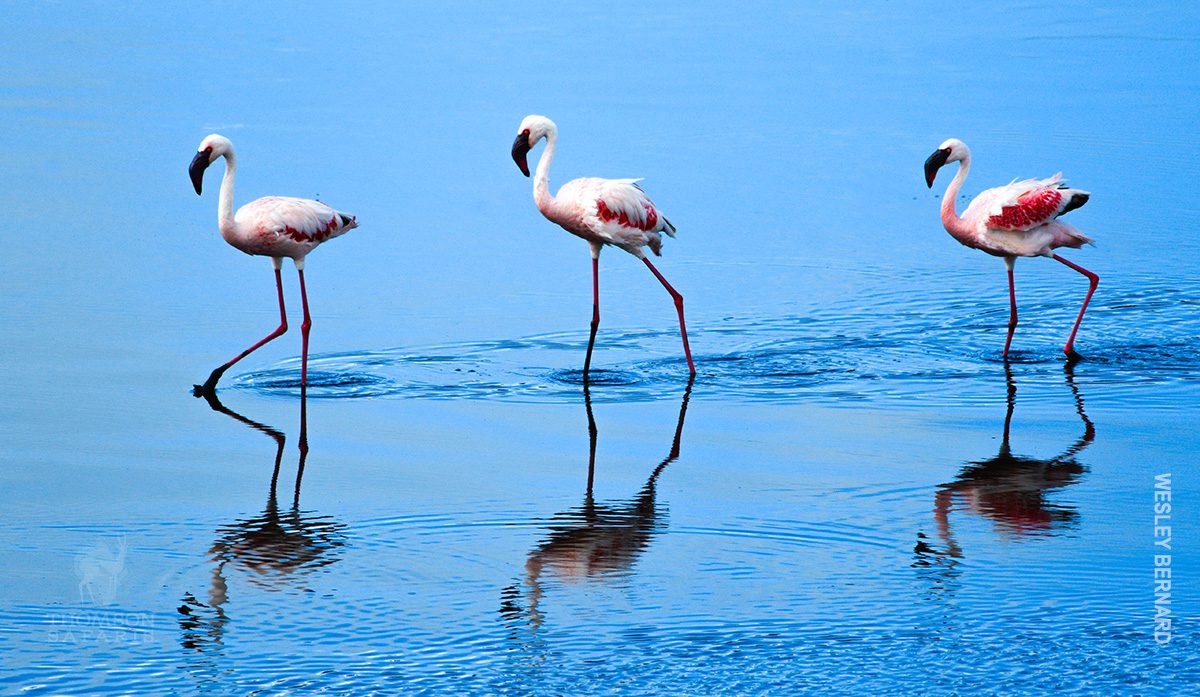
Despite its tall, large body and question-mark-shaped neck, the lesser flamingo is the smallest flamingo in the world. Pink plumage defines this lanky bird, which live in large groups around Tanzania’s Lake Natron. Its diet consists almost entirely of microscopic blue-green algae and other organisms found in the lake, but will also eat small aquatic invertebrates.
Small Birds
Vitelline Masked Weaver
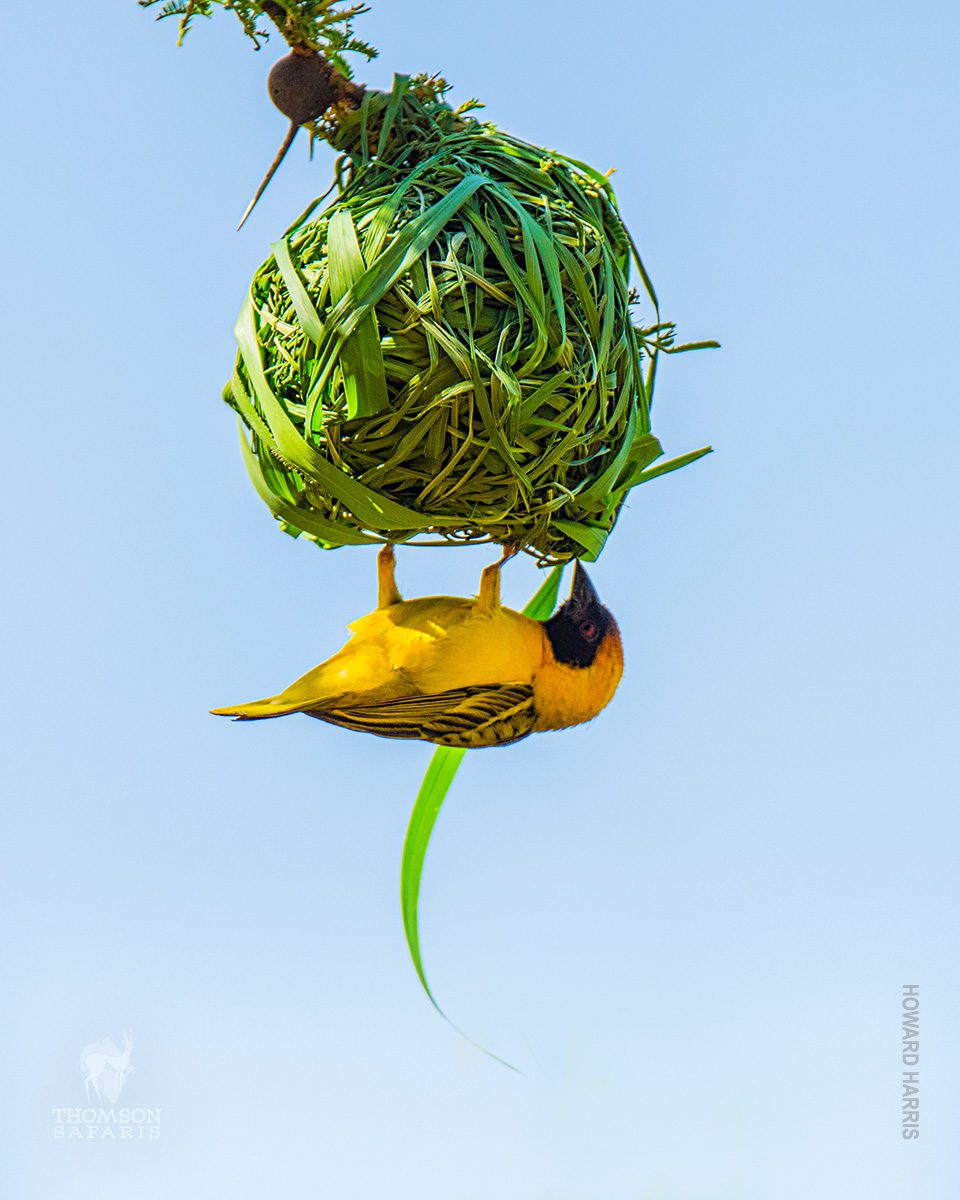
The vitelline masked weaver is a tiny, red-eyed bird found all over the Serengeti. Males have distinctive, bright yellow plumage with a pointy bill and chestnut coloring on the breast and crown. Females are much duller but have yellow streaks on their backs. Their vocalizations include “chek” noises and a fuzzy, garbled song, like radio static.
In the photo above, a male masked weaver builds a nest in the hopes that a female will pick it. However, females are very picky, and will reject most nests!
Superb Starling
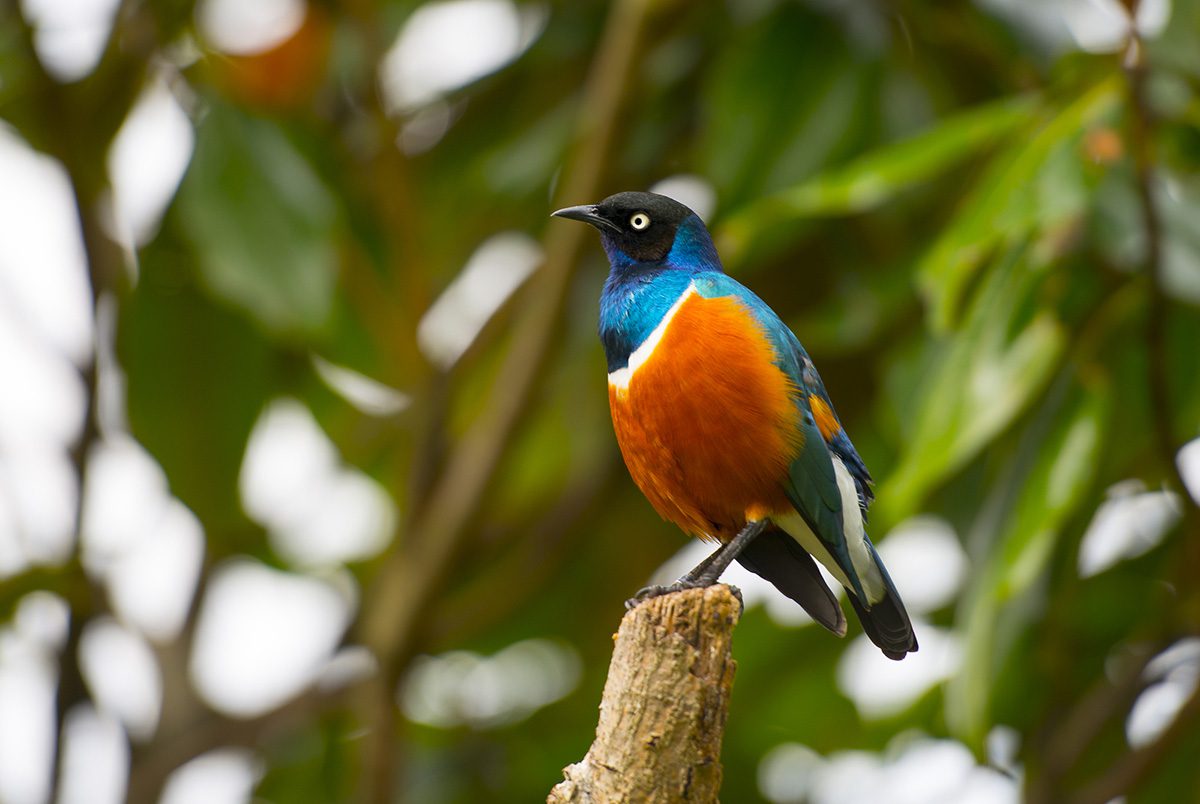
Stunning iridescent plumage makes the superb starling worthy of its name. They are found broadly across northern Tanzania and travel in small flocks. They are similar to many varieties of starling, but are easily distinguished by their white chest band, separating the blue breast from the fire-orange belly.
Lilac-breasted Roller
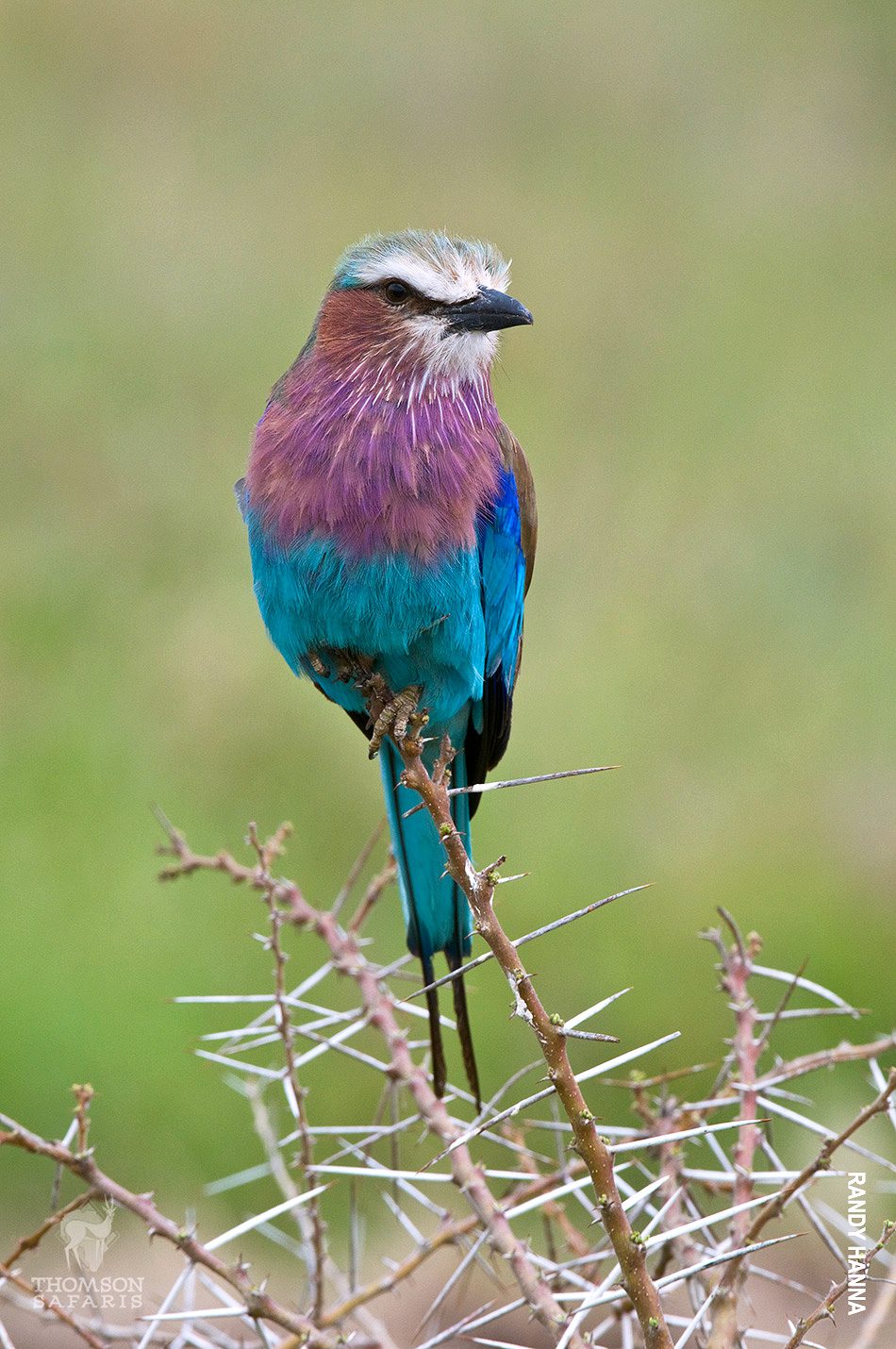
The lilac-breasted roller is found extensively through Tanzania, and its rust-colored cheeks, green crown, lilac breast and blue body make it highly visible. This bird is called a roller because its mating display often includes aerial stunts, such as rolling from side to side quickly–not to mention plenty of diving, swooping and loud, harsh cries.
Von der Decken’s Hornbill
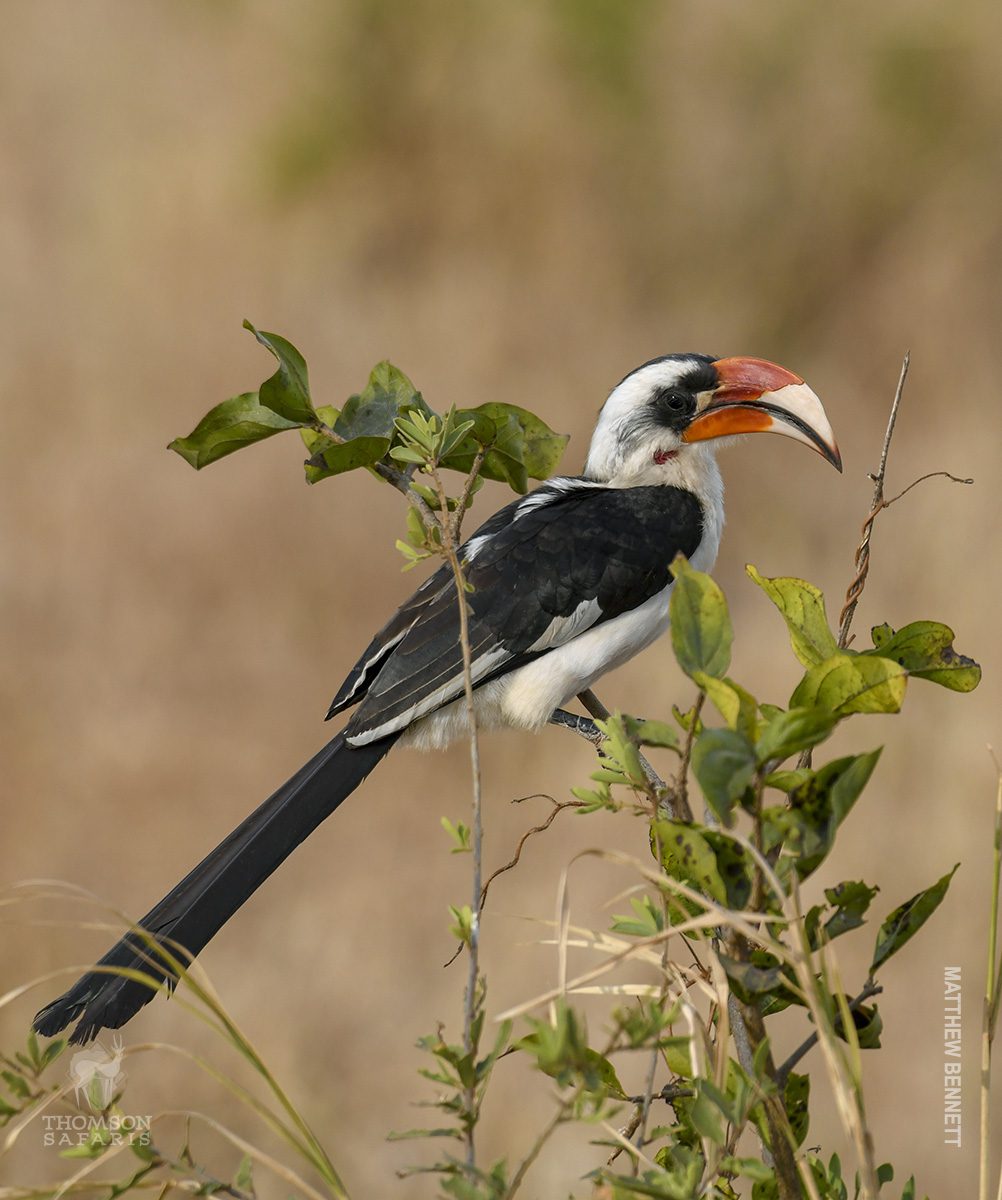
You may recognize the Von der Decken’s hornbill as Zazu from the Lion King! This bird is native to Tanzania’s dry regions. Males have clunky, red bills while females have black bills. Females isolate themselves in small tree cavities to hatch and raise their chicks. During this time, the male feeds the female and the chicks through a slit in their nest.
Video shot in 1/4 speed slow motion by Thomson guest Danny B. Smith
